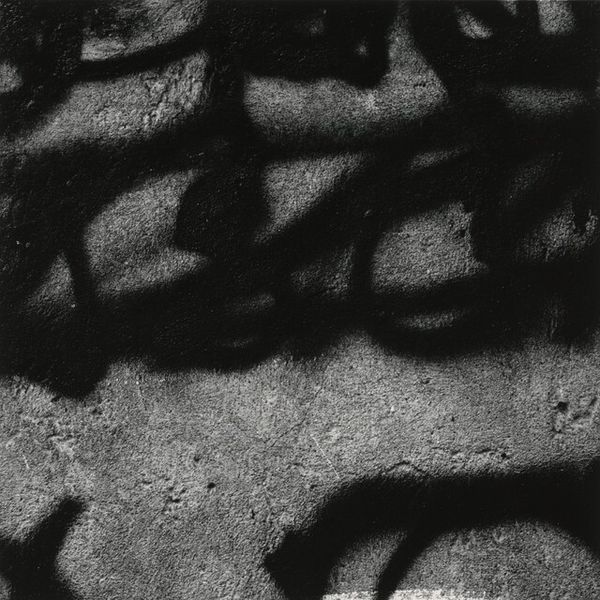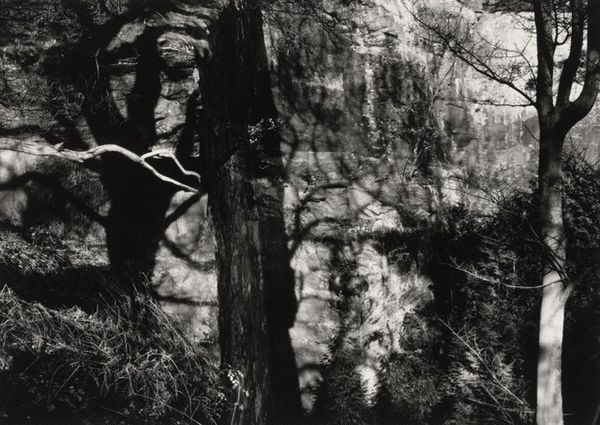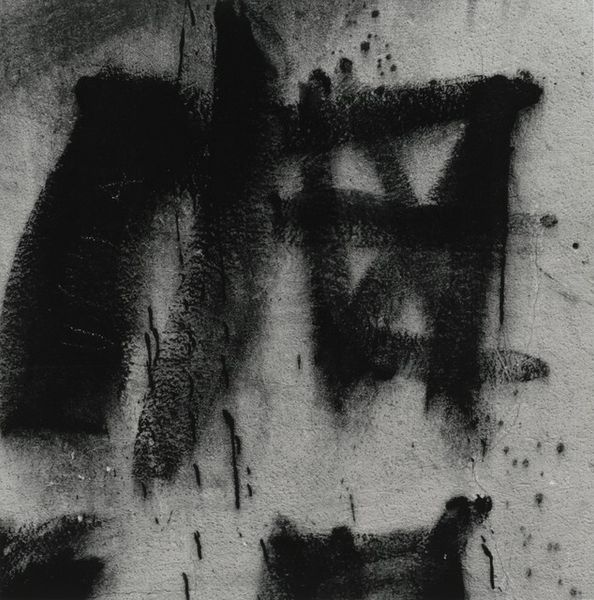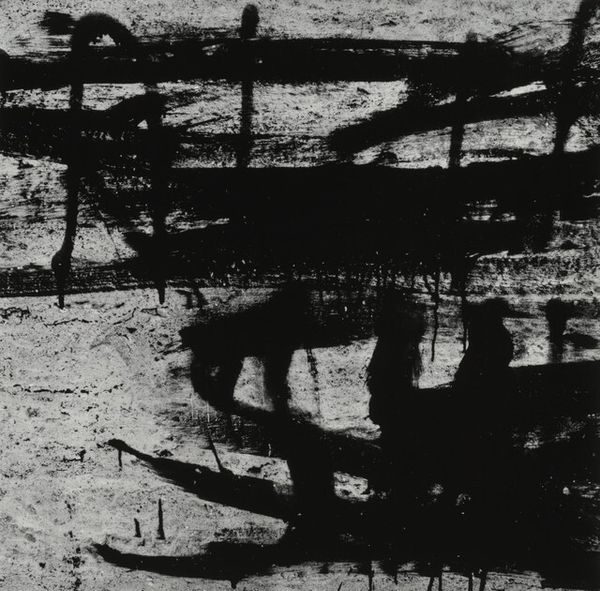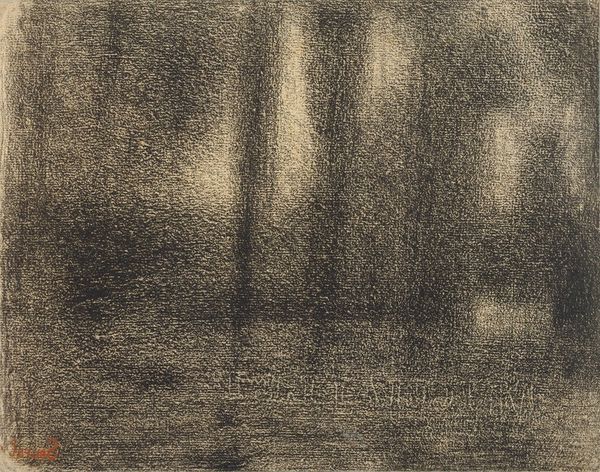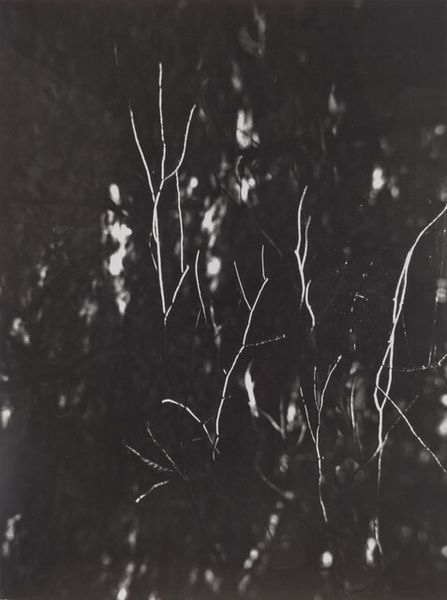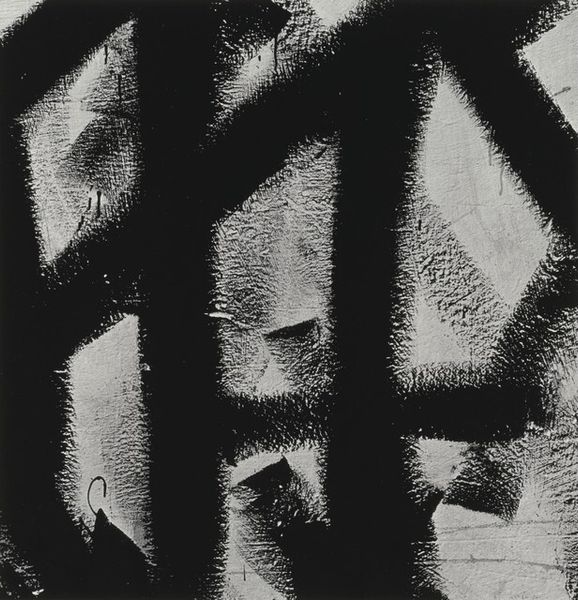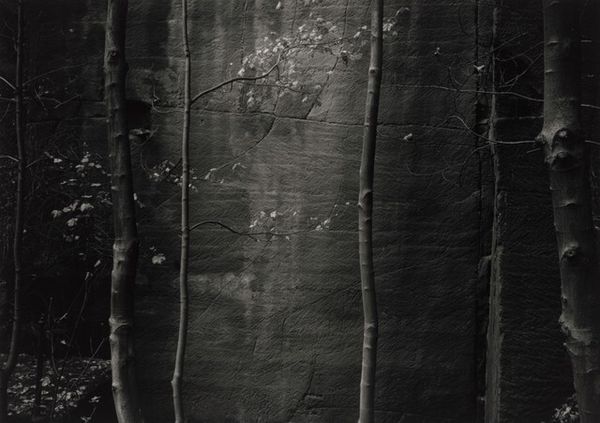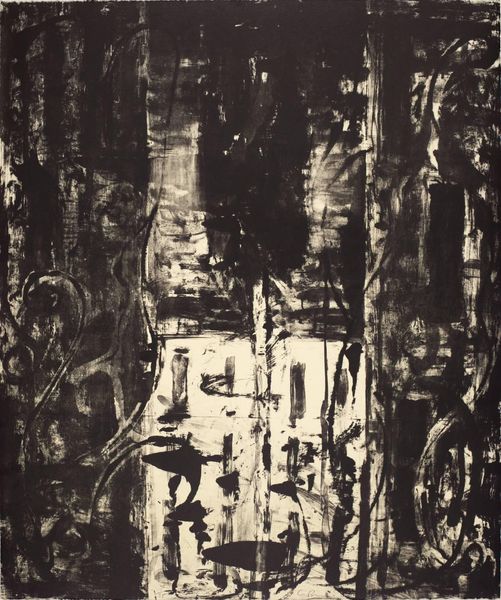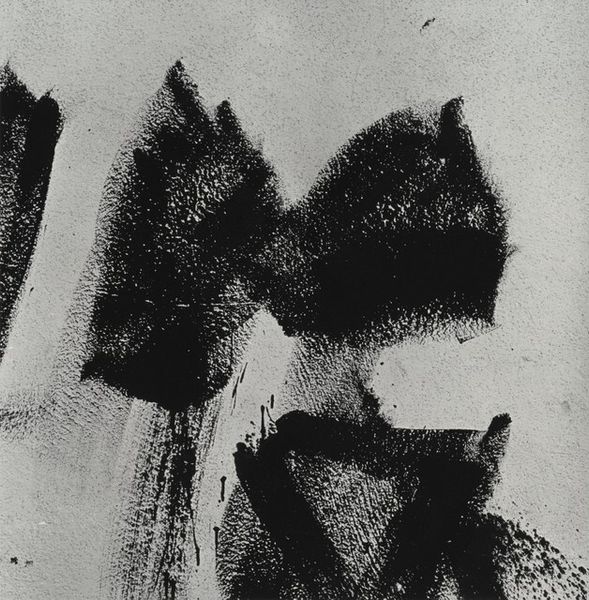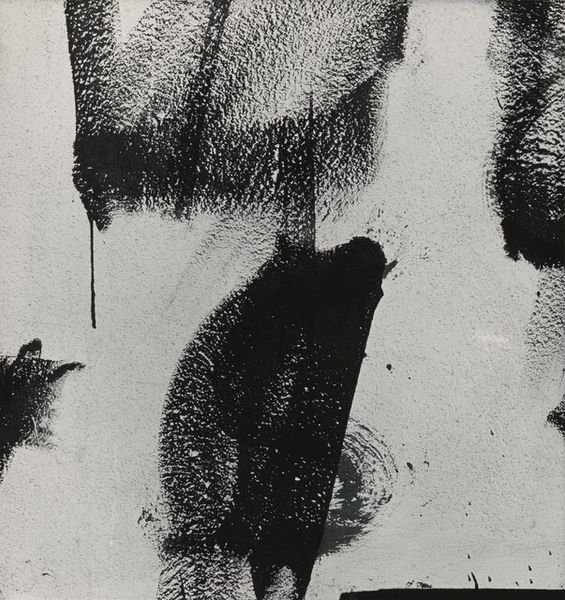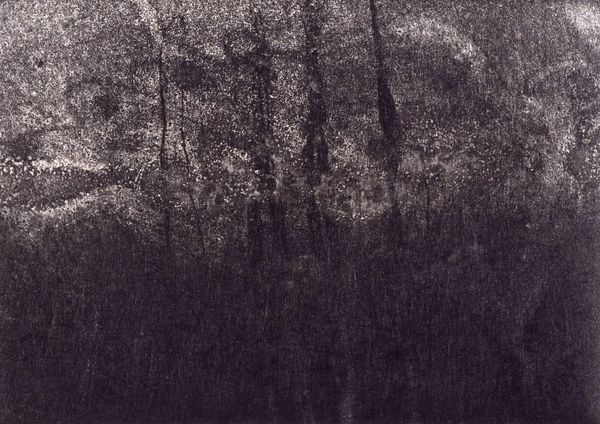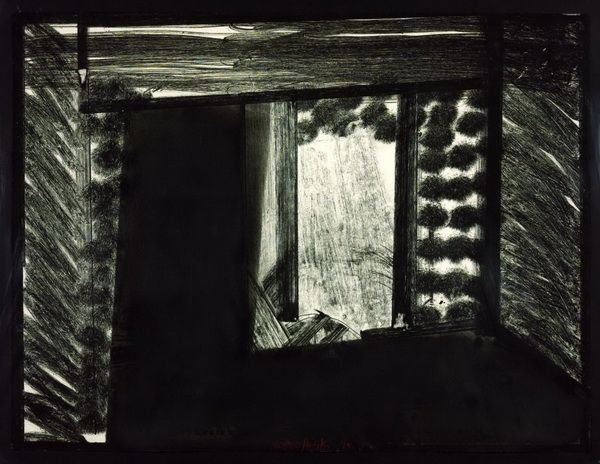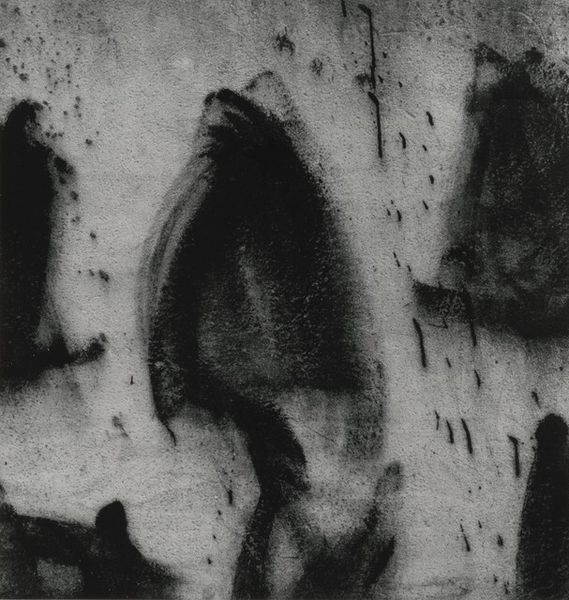![[no title] by Jannis Kounellis](/_next/image?url=https%3A%2F%2Fd2w8kbdekdi1gv.cloudfront.net%2FeyJidWNrZXQiOiAiYXJ0ZXJhLWltYWdlcy1idWNrZXQiLCAia2V5IjogImFydHdvcmtzLzM3ZTE2Y2ZjLTllYzMtNGRjNy05MzJlLTZmNTI2MjU0OTk2MC8zN2UxNmNmYy05ZWMzLTRkYzctOTMyZS02ZjUyNjI1NDk5NjBfZnVsbC5qcGciLCAiZWRpdHMiOiB7InJlc2l6ZSI6IHsid2lkdGgiOiAxOTIwLCAiaGVpZ2h0IjogMTkyMCwgImZpdCI6ICJpbnNpZGUifX19&w=3840&q=75)
Dimensions: support: 355 x 387 mm
Copyright: © Jannis Kounellis | CC-BY-NC-ND 4.0 DEED, Photo: Tate
Curator: This untitled work by Jannis Kounellis presents an intimate study at 355 by 387 mm, currently residing in the Tate Collections. Editor: It's striking, almost oppressive! All those vertical lines—it feels like a cage, or maybe a forest at night. Curator: Considering Kounellis’ engagement with Arte Povera, the use of simple materials and the emphasis on process over polished product are central. The lack of explicit narrative directs our attention to materiality itself. Editor: I see that! The rough texture, the interplay of light and shadow… it's not just what it depicts, but how it makes me *feel*. Like being lost, but finding a strange sort of beauty in the darkness. Curator: Precisely. It challenges our preconceptions of value by elevating the everyday. Editor: It whispers rather than shouts. A quiet intensity. Well, it’s definitely given me something to think about. Curator: Indeed, an intriguing piece from Kounellis to contemplate regarding artistic intentionality.
Comments
Join the conversation
Join millions of artists and users on Artera today and experience the ultimate creative platform.
tate 6 months ago
⋮
This etching is part of a portfolio of twelve abstract prints in an edition of twenty-one, of which this set is number twenty. Numbers one to ten have been bound; eleven to twenty-one are boxed loose portfolios. There are also five sets of artist's proofs. This text discusses the group of twelve works (P78423-P78434) as a whole. The plates were made in January 1999 in Kounellis' Roman studio using techniques which include softground etching, drypoint and aquatint as well as materials familiar from other areas of Kounellis' work, such as molten lead and wax, human hair, broken glass, coal and salt. The result is a series of twelve small, seductive abstract images, where delicate aquatinting is combined with marks, slashes, lumps and sharp lines which hint at the materials used (very literally in the case of P78433, where the artist has written the word 'piombo' - 'lead' - to indicate the nature of the abstract splotches above it) or, occasionally, at their maker (whose fingerprints can be seen on P78430 and P78434). The etchings were printed by the publisher, Jacob Samuel of Santa Monica, California, on Fabriano Tiepolo paper and natural Gampi. Gampi is a very fine Japanese paper which is placed between paper and plate at the time of printing and gives a rich, translucent finish to the resulting image. A short text by the artist prefaces the portfolio. Originally published in the journal Domus in 1982, it is repeated here in two languages, Italian and English, and describes an artist explaining to a jury his reasons for moving a figure from an unspecified print by Giovanni Battista Piranesi (1720-1778, the eighteenth-century Italian artist famous for his architectural engravings which depicted views of Rome) from the background to the foreground without changing the landscape. There follows a discussion about language, which has shifted from universal to a de-centred status, and the artist's need for a language which would allow him to enlarge the figure, in spite of his friends' warning that this would constitute an 'eversive act'. A courtroom verdict, given in the final lines of the text, finds the transgressor condemned to the life of a 'Wandering Jew', although the last line is given to the voice of a 'little old woman' who encourages the artist in his search which, she assures him, is 'the road to glory'. There appears to be no close connection between the text and the images. Giorgia BottinelliJanuary 2002 Further reading:Jannis Kounellis, 'Kounellis Brought to Trial', Domus, no.628, May 1982, pp.84-5.
